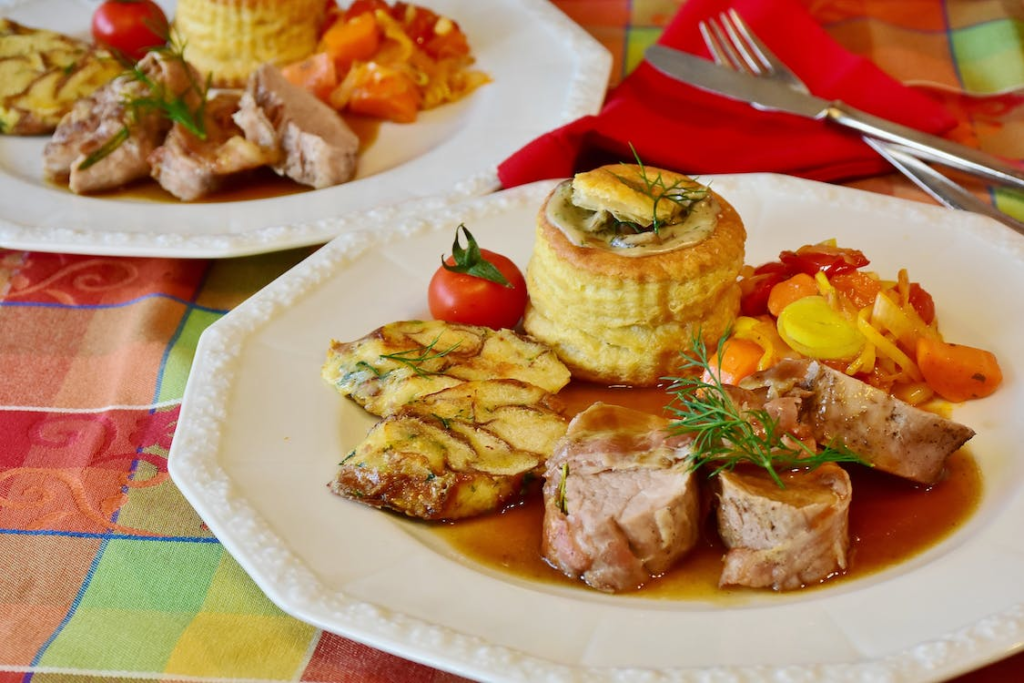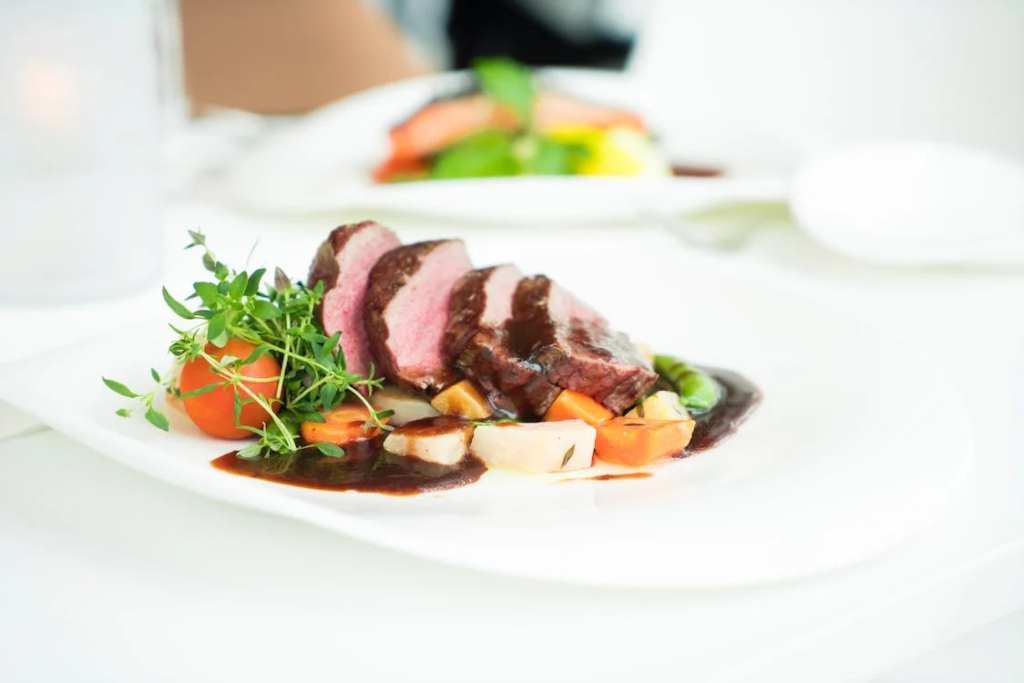How to Cook Pork Fillet Unlock the culinary magic with our exclusive recipe for the ultimate pork fillet sensation. In this tantalizing journey through flavor, we unveil the secrets to achieving pork fillet perfection
every time. Prepare to embark on a culinary adventure that will tantalize your taste buds and leave you craving more. Our recipe begins with
selecting the finest pork fillet, ensuring each cut is of the highest quality. Then, we delve into the art of marinating, infusing the meat with a symphony of flavors that will elevate every bite. From aromatic herbs to
zesty spices, each ingredient plays a crucial role in enhancing the natural richness of the pork.

Key Takeaways: How to Cook Pork Fillet
- Lean and Tender: Pork fillet, also known as pork tenderloin, is a lean and tender cut of meat obtained from the muscle that runs along the backbone of the pig.
- Selection: Choose pork fillets that are firm to the touch, pinkish-red in color, and evenly shaped for more uniform cooking.
- Trimming: Remove any visible fat or silver skin from the pork fillet before cooking to improve texture and appearance.
- Storage: Store raw pork fillet in the refrigerator for a couple of days or freeze for longer storage. Cooked pork fillet can be refrigerated for 3-4 days or frozen for up to 3 months.
- Cooking Methods: Pork fillet can be grilled, roasted, pan-seared, or slow-cooked. Ensure it reaches an internal temperature of 145°F (63°C) for safe consumption.
- Marinating: Marinating pork fillet adds flavor and helps tenderize the meat. Choose marinades that complement its natural sweetness, such as herbs, garlic, soy sauce, and citrus juices.
- Doneness: Use a meat thermometer to ensure pork fillet is cooked to perfection. It should reach 145°F (63°C) internally, and a slight pinkness in the center is acceptable.
Remember these key points to confidently select, prepare, and cook pork fillet for delicious and satisfying meals every time.
Learn. Best Filet Mignon Recipe – How To Cook – Delish
How to Cook Pork Fillet A Step-by-Step Guide
- Step 1: Preparation
- Start by selecting a high-quality pork fillet from your local butcher or grocery store. Ensure it is fresh and free from any discoloration or strong odors.
- If necessary, trim any excess fat or silver skin from the pork fillet using a sharp knife.
- Take the pork fillet out of the refrigerator and allow it to come to room temperature for about 20-30 minutes before cooking. This helps ensure even cooking.
- Step 2: Seasoning and Marinating
- Season the pork fillet generously with salt and pepper on all sides. You can also add additional herbs, spices, or a marinade of your choice for extra flavor.
- If you choose to marinate the pork fillet, place it in a shallow dish or resealable plastic bag and cover it with your marinade of choice. Allow it to marinate in the refrigerator for at least 30 minutes or up to overnight for maximum flavor.
- Step 3: Preheat the Cooking Surface
- Preheat your cooking surface, whether it’s a grill, skillet, or oven, to medium-high heat. Make sure it’s hot enough to sear the pork fillet quickly.
- Step 4: Cooking
- If grilling: Place the pork fillet on the preheated grill and cook for 4-5 minutes per side, or until the internal temperature reaches 145°F (63°C), turning once halfway through cooking.
- If pan-searing: Heat a skillet over medium-high heat and add a small amount of oil. Once hot, add the pork fillet to the skillet and cook for 4-5 minutes per side, or until golden brown and cooked through.
- If roasting: Preheat your oven to 400°F (200°C). Place the pork fillet on a roasting pan or baking sheet lined with parchment paper and roast for 20-25 minutes, or until the internal temperature reaches 145°F (63°C).
- Step 5: Resting and Serving
- Once cooked to your desired doneness, remove the pork fillet from the heat source and let it rest for 5-10 minutes before slicing. This allows the juices to redistribute throughout the meat, ensuring it stays moist and tender.
- Slice the pork fillet into thin slices and serve immediately with your favorite side dishes, such as roasted vegetables, mashed potatoes, or a fresh salad.
- Enjoy your perfectly cooked pork fillet!

FAQ. How to Cook Pork Fillet
- What is pork fillet? Pork fillet, also known as pork tenderloin, is a lean and tender cut of meat obtained from the muscle that runs along the backbone of the pig. It’s prized for its tenderness and versatility in cooking.
- How do I select a good pork fillet at the store? Look for pork fillets that are firm to the touch and have a pinkish-red color. Avoid fillets with any signs of discoloration or unpleasant odor. Additionally, choose fillets that are evenly shaped for more uniform cooking.
- Should I trim the fat from the pork fillet? Pork fillet is naturally lean, but it may have a thin layer of silver skin or excess fat that can be removed before cooking. Trim any visible fat or silver skin using a sharp knife to improve the texture and appearance of the cooked fillet.
- How should I store pork fillet? Store raw pork fillet in the refrigerator in its original packaging or in an airtight container. Use it within a couple of days or freeze it for longer storage. Cooked pork fillet can be stored in the refrigerator for 3-4 days or frozen for up to 3 months.
- What are some cooking methods for pork fillet? Pork fillet can be grilled, roasted, pan-seared, or even slow-cooked. It’s a versatile cut that adapts well to various cooking techniques. Remember to cook pork fillet to an internal temperature of 145°F (63°C) for safe consumption.
- Can I marinate pork fillet? Absolutely! Marinating pork fillet adds flavor and helps tenderize the meat. Choose a marinade that complements the natural sweetness of the pork, such as a mixture of herbs, garlic, soy sauce, and citrus juices.
- How do I know when pork fillet is cooked? The best way to determine if pork fillet is cooked is by using a meat thermometer. Insert the thermometer into the thickest part of the fillet, and once it reads 145°F (63°C), the pork is safe to eat. Alternatively, you can make a small cut in the fillet; it should be slightly pink in the center but not raw.
Learn. How To Cook Garlic Bread